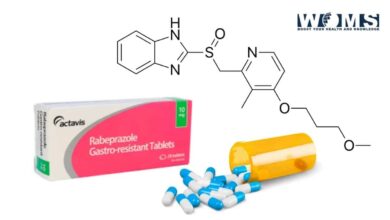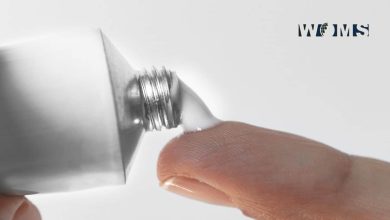Antiparkinson drugs: Drugs to fight against Parkinsonism

Antiparkinson drugs are used for the treatment of parkinsonism. Parkinsonism is an extrapyramidal motor disorder characterized by rigidity, tremor, and bradykinesia. Parkinsonism is a progressive nature that causes disorder of movement that can occur in the elderly, commonly associated with dementia. There are anti- Parkinson drugs available to fight against parkinsonism disease. We will discuss Parkinson’s medication in this article.
Parkinsonism is a disease that can occur due to various reasons
Here are some reasons which can cause degeneration of dopaminergic neurons leading to Parkinsonism.
- While taking medications like anti-psychotic or antiemetics.
- If there is head trauma repeatedly occurring, such as injuries arising during boxing
- If the person is suffering from neurodegenerative disorders like multiple system atrophy or a Lewy body dementia
- If one exposes to toxins, herbicide, or chemical compounds, which affects your neurons.
- If there is a presence of specific brain lesions
What is the Biological basis of Parkinsonism?
There is a biological basis that occurs in Parkinsonism. Here is the biological cause of Parkinsonism.
- Decreased dopamine concentration
- Increased cholinergic activity.
So imbalance occurs between dopaminergic and cholinergic activity. Due to which it affects various functions. Among which there is an imbalance in the posture of an individual.
Antiparkinson drugs:
The drugs which act as a medication for the treatment of parkinsonism disease are called antiparkinson drugs. Antiparkinson drugs mainly maintain dopamine levels, which is low in parkinsonism people compared to ordinary people.
How do antiparkinson drugs work?
Let’s see how does antiparkinson dugs work.
The main motto of Parkinson’s medication is:
- To maintain the dopamine level of the brain
- To keep the balance between dopamine and acetylcholine level of the brain
Antiparkinson drug classification
Antiparkinson drugs into different classes are:
1. Increased dopamine concentration and activity:
a)Dopamine precursor
- Levodopa (L-Dopa)
b) Dopamine agonist
- Bromocriptine
- Ropinirole
- Pergolide
- Pramipexole
2.Increased dopamine synthesis, release
- Amantadine
3.Decreased dopamine metabolism
MAO inhibitors
- Rasagiline
- Selegiline
COMT inhibitors
- Tolcapone
- Entacapone
4.Drug that decrease antimuscarinic activity
- Procyclidine
- Benztropine
- Benzhexol
- Biperiden
Some drugs responsible for Parkinsonism:
Here are the medicines which are responsible for Parkinsonism.
- Haloperidol
- Chlorpromazine
- Methyldopa
- Reserpine
- Metoclopramide
- Valproic acid
Why can dopamine not be used to treat Parkinsonism?
This question might come to your mind during the anti parkinsonism medication discussion, or Parkinson’s medication comes into limelight.
The reason is simple because the dopamine cannot cross the blood brain barrier due to which it cannot show its pharmacological action and treat Parkinsonism.
L-dopa
It is an intermediate metabolic precursor of dopamine. It is inactive itself.
L-dopa goes inside by crossing BBB. Then in the presence of DOPA decarboxylase, it gets converted into dopamine. The dopamine gets released into the synapse. The dopamine binds to a receptor present in the postsynaptic endings and performs the activities.
Why L-dopa combinedly used with carbidopa?
L-dopa is used with carbidopa because usually, L.dopa converts into dopamine in the periphery. In the periphery, 70% of the DOPA decarboxylase enzyme, and this dopamine has more adverse effects.
Only 1-3% L-dopa crosses BBB. But when L.dopa is combined used with carbidopa. Carbidopa is an antiparkinson drug that inhibits peripheral DOPA decarboxylase enzyme.
So L.dopa is not converted into dopamine in the periphery. More L.dopa is available in the periphery, which ultimately crossed BBB and converted into dopamine in the brain by DDC enzymes, increasing dopamine concentration in the brain, and correction of parkinsonism disease.
Adverse effects of L.Dopa
When L.dopa comes into use, we can see some adverse effects. The adverse effects are :
- Anorexia
- Nausea
- Vomiting
- Anxiety
- Tachycardia
- Insomnia
- Hallucination
- Delusion
- Confusion
- Nightmare
- Euphoria
Rare side effects of L-dopa
- Hemolytic anemia
- Duodenal ulcer
- Hypertension(high blood pressure)
Contraindications
Contraindications occur in:
- The person who is psychotic as it can exacerbate the condition.
- The person having glaucoma
- The person suffering peptic ulcer
Dopamine agonist
It mimics the activity of dopamine by acting on dopamine receptors.
Carbidopa is a dopamine agonist and comes in use in combination with levodopa.
MOA inhibitors
Selegiline is an MOA inhibitor. It inhibits dopamine conversion into DOPAC due to which the concentration of dopamine binding to the receptor increases. When it is with levodopa, it increases the action of levodopa.
Amantadine:
It is prescribed for relief of symptoms for a short-term basis in Parkinson’s disease patients of mild or early-stage. During the later stages of Parkinsonism, it may also be given with carbidopa-levodopa. It is done to control involuntary movements called dyskinesia, which may be induced by carbidopa-levodopa.
Side effects:
- Ankle swelling
- Hallucinations
Antimuscarinic drugs:
This antiparkinsons drug is not as effective as levodopa for treating idiopathic Parkinsonism. They are mainly used in the early progression of the disease. They are given to maintain the motor symptoms.
Benztropine:
It is one of the antimuscarinic drugs used for treating Parkinsonism. For Monotherapy or combination therapy, benztropine is given. It is mostly used for tremors and dystonia in younger people. Its use is avoided in the elderly. It can be useful in treating excessive drooling.
Side Effects:
- Hallucinations
- Dry mouth
- Dry skin
- Blurry vision
- Urinary retention
- Insomnia
- Constipation
- Tachycardia
Conclusion:
Parkinsonism is a progressive nature that causes disorder of movement that can occur in the elderly, commonly associated with dementia. There are antiParkinson drugs available to fight against parkinsonism disease. The medicines are used for the treatment of parkinsonism disease are called Parkinson’s medication. Parkinson’s medication is classified into different classes based on their mechanism of action.
Do read about: Autocoids




